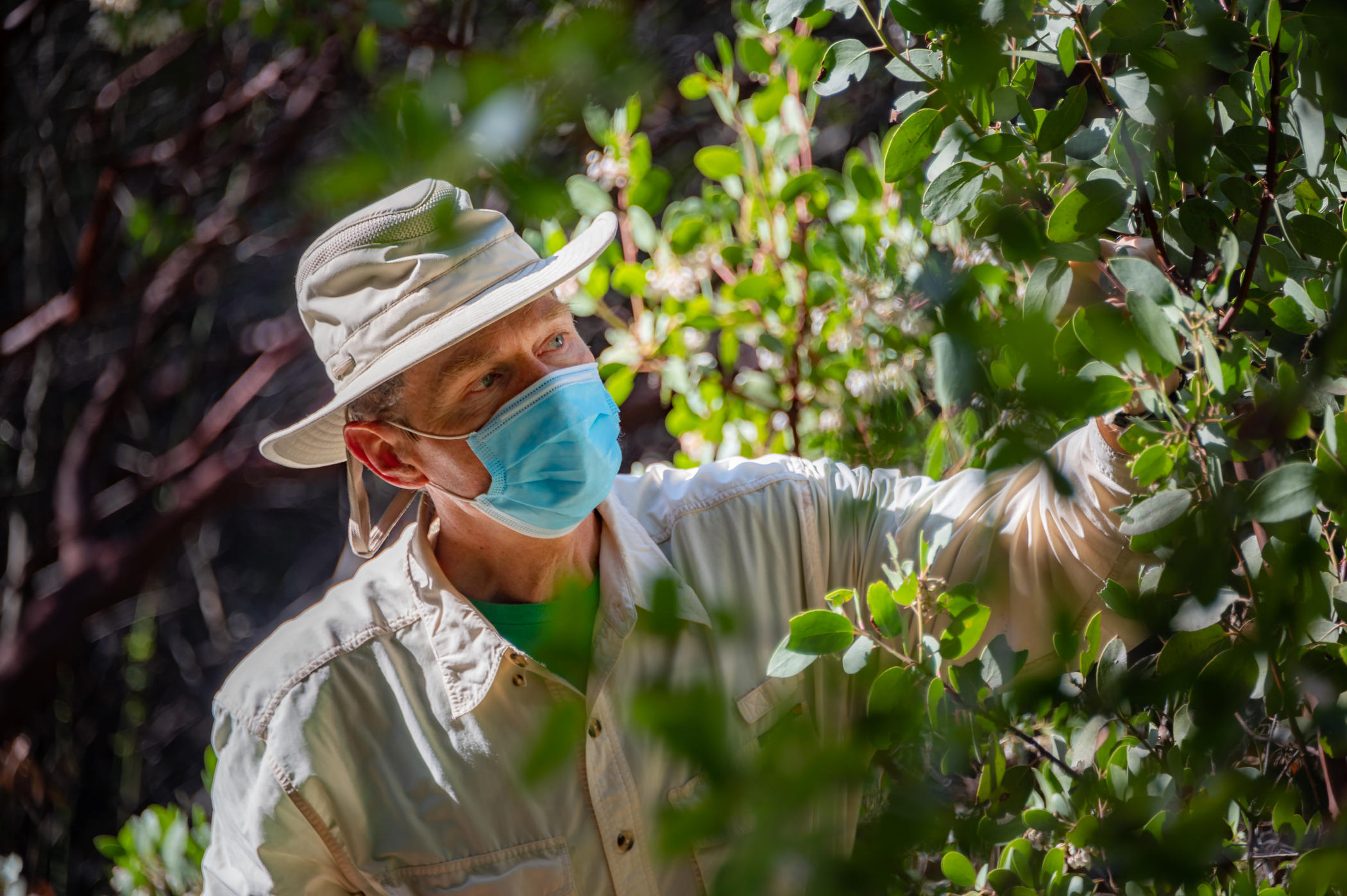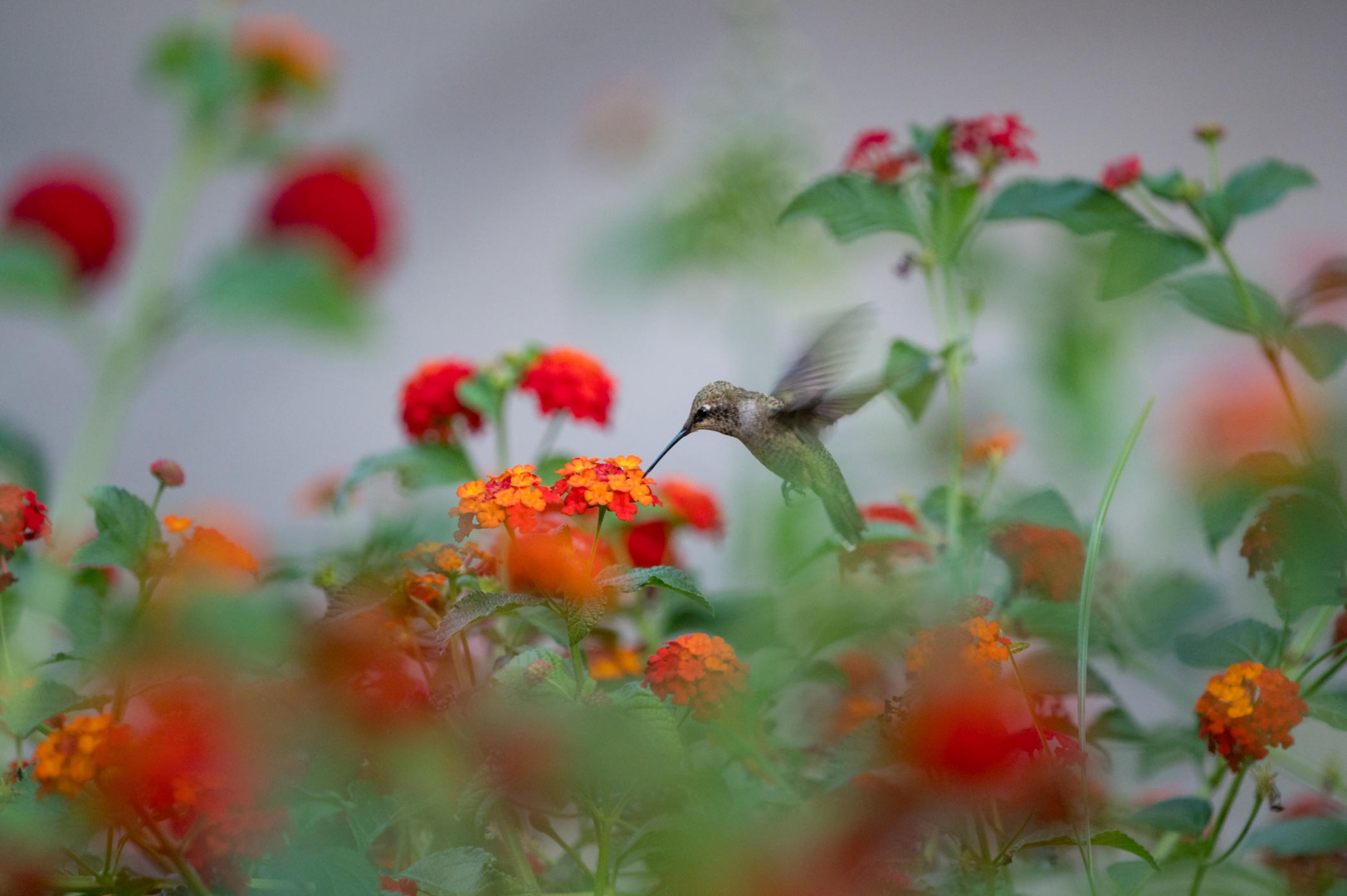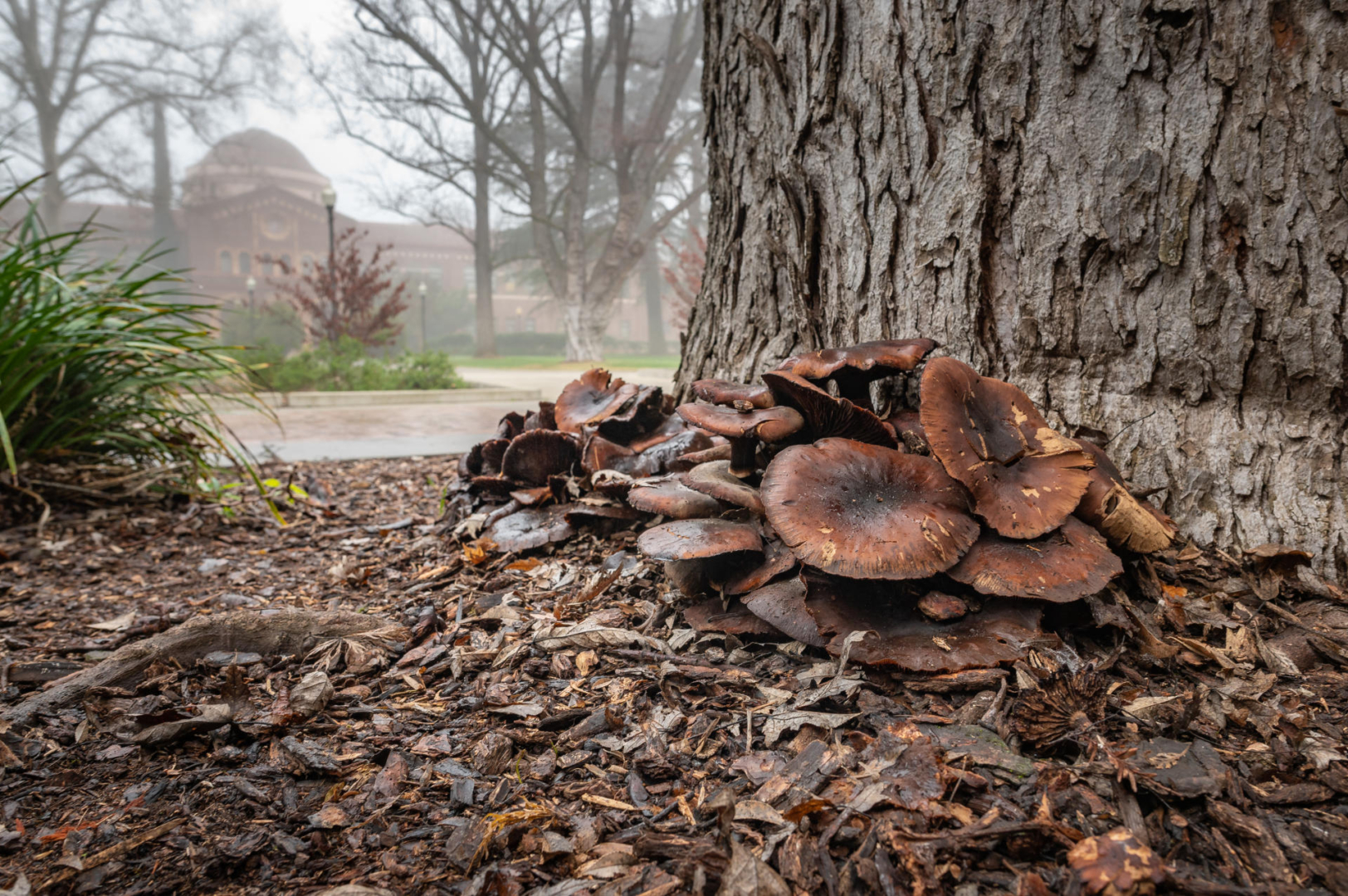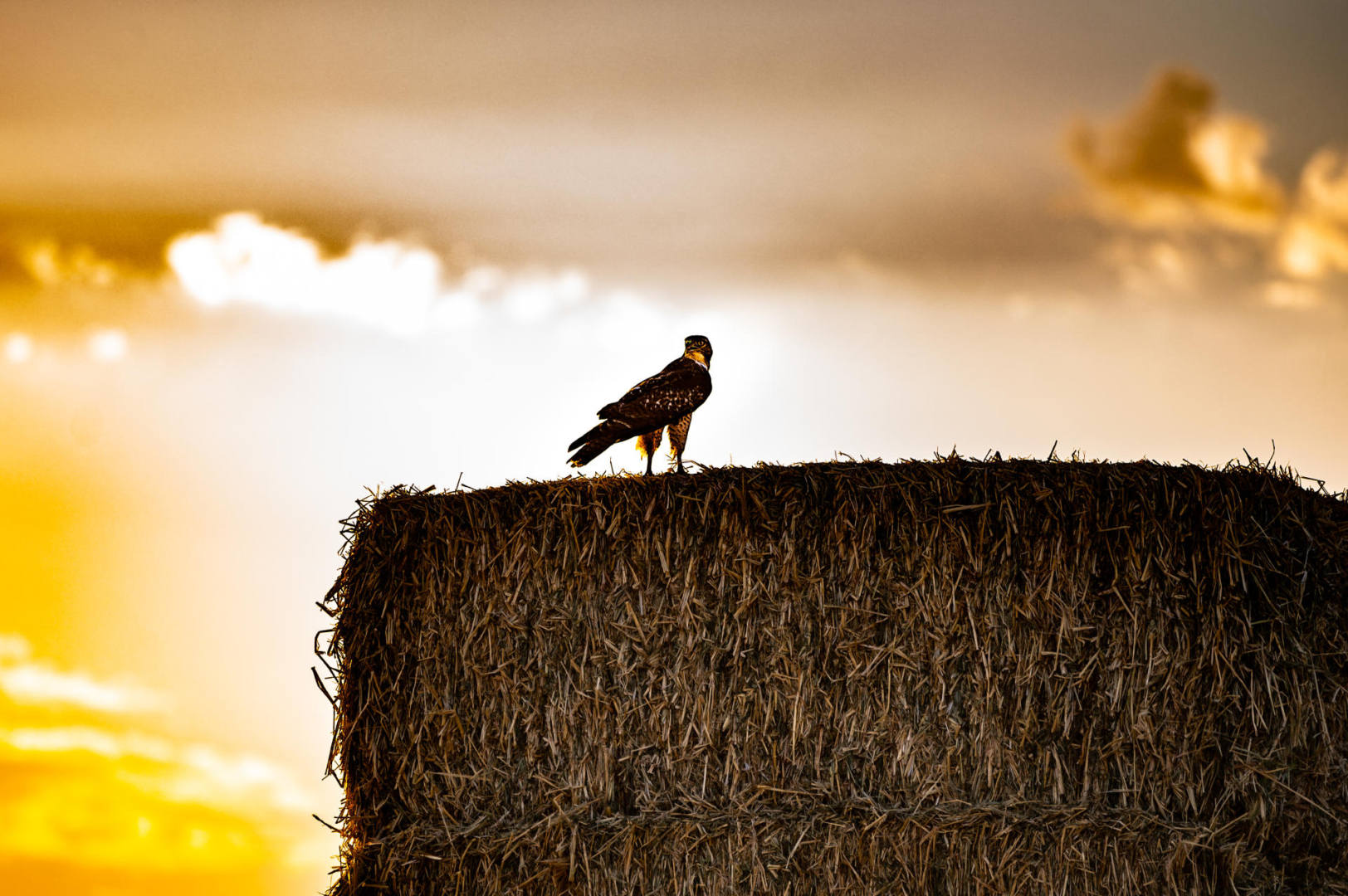How To: Be a Backyard Biologist

Faculty Don Miller teaches students how to measure manzanitas and survey gall counting at the Big Chico Creek Ecological Reserve (BCCER) as part of the Big Chico Creek Watershed Tour on Sunday, March 7, 2021 in Chico, Calif. Big Chico Creek Watershed Tour is an all-outdoors experiential learning course for students majoring in Agriculture, Biology, Civil Engineering, Environmental Science, Geography, Political Science, and Wildland Management offered by faculty associates of the Center for Water and the Environment. Student participants will metaphorically follow a drop of water from the headwaters of the creek to its confluence with the Sacramento River over four day trips on in March and April. (Jason Halley/University Photographer/CSU, Chico)
Biology professor Don Miller loves sharing the awe of our natural world.
“All of us can benefit from getting to know a little more about nature,” he said.
With some practice and patience, most people can easily become citizen scientists who are familiar with the species around them. Here are a few of his favorite tips for novice naturalists.
Get out there! Walk out into your yard, and try to focus on something and find out what it is. There is a whole history to it you may not yet perceive but it has its own deep story to tell. Maybe it’s just an alley or a lawn, and it’s not super fascinating, but you get some kind of handle on what’s nearby that you may never have realized before!

Use your senses. Shut out the noise in your head and open your eyes, ears, nose, and sense of touch and absorb whatever is nearby! Otherwise, you might walk past like it doesn’t even exist. Once you “turn your eyes on,” things will start to jump out of the landscape and shout at you. Birds are by far the most popular—they seem to be just about everywhere and they are always in motion, making them easy to spot.
Pick a starter species. Whether mushrooms, butterflies, or trees, choose something that’s interesting to you and start to look for them in the landscape. Once you start seeing certain species, you’ll start to recognize them everywhere, and then can make connections and deepen your interest—what is growing on them, what else uses it for habitat or food?

Find a group to belong to or tag along with. If you go with someone who knows their lichen, fungi or flowers, you realize, “There is so much more out there I could know.” No matter where you live, there’s probably a mushroom walk or birdwatching group near you. Go with them and see what they see as they help you sift through the information. You can also easily find special events nearby like the Audubon Society’s Christmas Bird Count or our annual butterfly counts or the owl-banding project at the Big Chico Creek Ecological Reserve. You not only get a crash course in whatever the group is focused on but you will also provide important data on local species.
Use your cell phone. Tools have gotten so much more sophisticated. While they are not infallible, don’t be afraid to turn to apps that use visual or audio recognition to tell you what plant you’re looking at or bird you are hearing. The Audubon app is a favorite of mine. You can also take pictures and ask an expert or compare with species at places where they are labeled, like museums, herbariums, or arboretums. People love to show me photos and will ask “Do I have a spicebush swallowtail or a luna moth?” I love to help identify them.

Learn the names and histories. Explore with a field guide, a handbook, or even Google. If you can name it, you have a way to learn more. I want to know where things came from, how humans have interacted with or impacted them. We have whole species that depend heavily on humans, like ginkos, starlings, and Norway rats. There is something about the way we are that they thrive off of. When I look at any species, I want to understand how humans managed before them, are they native species, do they live in reasonable harmony with humans? I think of it as almost making friends. You know who they are, you have a sense about their lives, and you appreciate them.

Don Miller has taught at Chico State since 2002 and is an expert on insect-plant interactions and invertebrate behavioral ecology. He has a PhD in environmental science, policy, and management from UC Berkeley; a master’s in biological anthropology from the University of Oxford; and a bachelor’s in biology from State University of New York, Syracuse. The University’s arboretum and Big Chico Creek Ecological Reserve are two of his favorite spaces to study everyday species!


